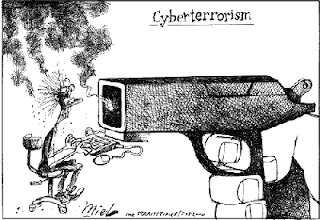Security Exchange Commission investigation,NOT
Security Exchange Commission needs investigating.
The report lays out the backdrop to the flash crash, noting May 6 began "as an unusually turbulent day," with the markets roiled by the European debt crisis. By 2:30 p.m. Eastern time, the Dow Jones Industrial Average was down about 276 points. TWO MIN LATER,
At 2:32 p.m., a trader at Waddell & Reed placed a huge (HOW HUGE? ) order to sell E-mini futures contracts, which mimic movements in the S&P 500-stock index. This kind of trade wasn't unusual for Waddell, ( WAS A TRADE OF THIS SIZE UNUSUAL?)which at the time managed some $25 billion( BUT NOT NOW), including the popular Ivy Asset Strategy Fund. As part of the fund's strategy, the firm from time-to-time places bets that the broad stock market will fall as a hedge against its individual stock holdings.
Also not unusual was that Waddell placed the trade using a computer program known as a trading "algorithm" designed to stand in for a human trader and parse out buying or selling based on different variables. Generally, traders opt for algorithms that consider trading volume, price changes and the amount of time to complete a trade.(THIS TIME THEY DIDN'T CONSIDER TRADING VOLUME? OR PRICE CHANGES, THIS TIME?)
But Waddell's desk opted for an algorithm designed to sell 75,000 E-mini contracts at a pace that would range up to 9% of trading volume—(BUT THIS TIME IT TRADED MORE THAN 75,000 CONTRACTS?)and not take into account other factors. The report details how a similar-size trade earlier in 2010 took five hours to execute, but in this case, the Waddell trade unloaded on the market in just 20 minutes.
As the Waddell trade hit the futures markets, the joint report said, the likely buyers included high-frequency trading firms. A key feature of high-frequency trading firms is that they quickly exit trades and, by 2:41, they were also aggressively selling the E-mini contracts they had bought from Waddell, which was still trying to sell the remainder of its contracts.
Meanwhile, long-term buyers were out of the market in the midst of the selloff.
"HFTs began to quickly buy and then resell contracts to each other(HOW ARE THEY GENERATING A PROFIT?)—generating a 'hot-potato' volume effect as the same positions were passed rapidly back and forth(WHY)," the report says. At one point, HFTs traded more than 27,000 contracts in just 14 seconds—a huge amount.( SCAM?)
The Waddell algorithm responded to the high volume by picking up the pace of its selling, even though stocks were spiraling lower.
This feedback loop of selling by Waddell, high-frequency traders and others helped drive the E-mini price down 3% in just four minutes.(SO OTHER SHORT TERM TRADERS ARE BUYING?)
The report cited this episode as a "key lesson" of the report: "Especially in times of significant volatility, high trading volume is not necessarily a reliable indicator of market liquidity." (IT DAMN WELL SHOULD BE IF EVERYTHING WAS ON THE UP AND UP)
A CFTC official called the execution of the trade "unfortunate" and said it "effectively resulted in the erosion" of liquidity in the E-mini contract, which was exacerbated by other market players. He said it wasn't clear whether the flash crash would have been avoided without the trade. (THEY JUST SAID IT DID!)
THIS REPORT LEAVES TOO MANY UNANSWERED QUESTIONS AND STILL DIDN'T ADDRESS
THE FUNDAMENTAL PROBLEMATIC ISSUE, WALL ST BANKS ARE DOING THINGS IN DARK
MARKETS IN SECRET AND HAVE A DISTINCT ADVANTAGE OVER THE SMALL INVESTOR,
THEY ARE DOING THINGS THE SMALL INVESTOR ISN'T ALLOWED TO DO, ITS NO LONGER AND
LEVEL PLAYING FIELD.
WHO INVESTIGATES THE SEC?










